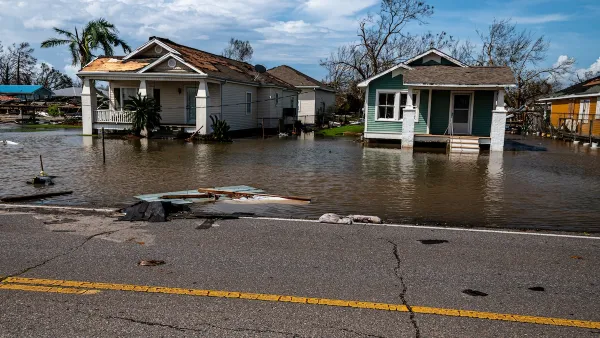This column from The Wall Street Journal argues that the best way to prevent damages from natural disasters is not to fight carbon emissions, but to prevent people from living in disaster-prone areas.
"It has become more popular than ever to reside in low-lying, coastal areas that are particularly vulnerable to extreme weather. In Florida, more people live in Dade and Broward counties today than lived in all 109 coastal counties from Texas through Virginia in 1930. It's obvious that more damage will occur when many more people with much more wealth live in harm's way."
"No matter how you look at it, however, the prospect of $1 trillion of weather-related damage by 2040 is frightening. But it is just as frightening that we have developed a blinkered focus on reducing carbon emissions as a way to somehow stop the devastation of events like Hurricane Dean."
"Presumably, our goal is to help humans and the planet. Cutting carbon is a very poor way of doing that. If coastal populations kept increasing but we managed to halt climate warming, then research shows that there would still be a 500% increase in hurricane damage in 50 years' time. On the other hand, if we let climate warming continue but stopped more people from moving into harm's way, the increase in hurricane damage would be less than 10%."
*Editor's Note: This article will be available to non-subscribers of The Wall Street Journal for up to seven days.
FULL STORY: Storm Surge

Planetizen Federal Action Tracker
A weekly monitor of how Trump’s orders and actions are impacting planners and planning in America.

Vehicle-related Deaths Drop 29% in Richmond, VA
The seventh year of the city's Vision Zero strategy also cut the number of people killed in alcohol-related crashes by half.

As Trump Phases Out FEMA, Is It Time to Flee the Floodplains?
With less federal funding available for disaster relief efforts, the need to relocate at-risk communities is more urgent than ever.

US Forest Service Could Open Millions of Roadless Acres to Logging
The USDA indicated it plans to repeal the ‘Roadless Rule,’ a Clinton-era regulation that prevents new road-building in undeveloped federal forest areas.

Judge Reverses Federal Funding Freeze for EV Infrastructure
A federal judge ordered the Trump administration to release funding for the National Electric Vehicle Infrastructure Program, a $5 billion program aimed at improving charging infrastructure.

Santa Monica May Raise Parking Permit Fees
The city says the changes would help better manage curb space and support its sustainability goals.
Urban Design for Planners 1: Software Tools
This six-course series explores essential urban design concepts using open source software and equips planners with the tools they need to participate fully in the urban design process.
Planning for Universal Design
Learn the tools for implementing Universal Design in planning regulations.
JM Goldson LLC
Custer County Colorado
Sarasota County Government
City of Camden Redevelopment Agency
City of Astoria
Transportation Research & Education Center (TREC) at Portland State University
Camden Redevelopment Agency
City of Claremont
Municipality of Princeton (NJ)


























